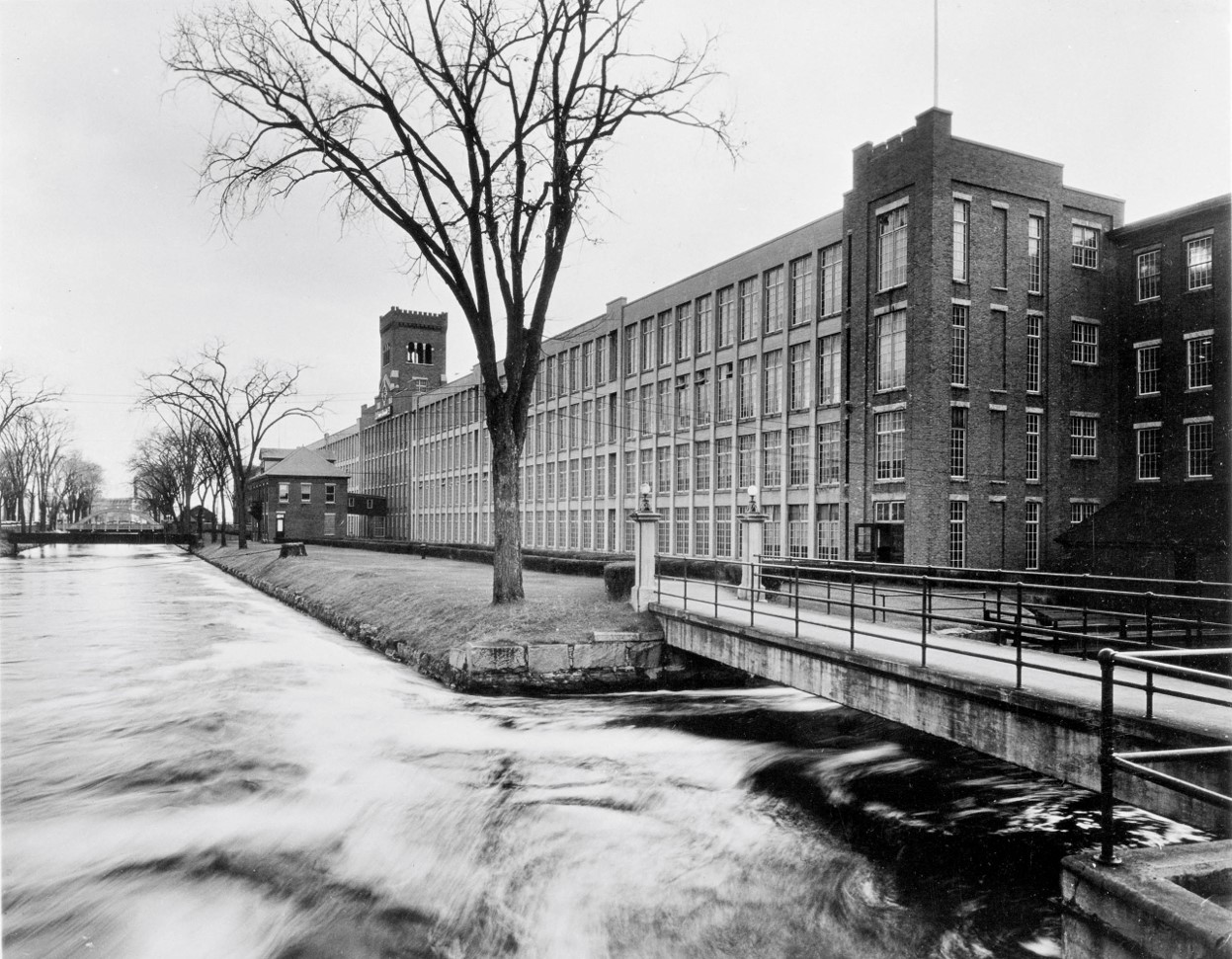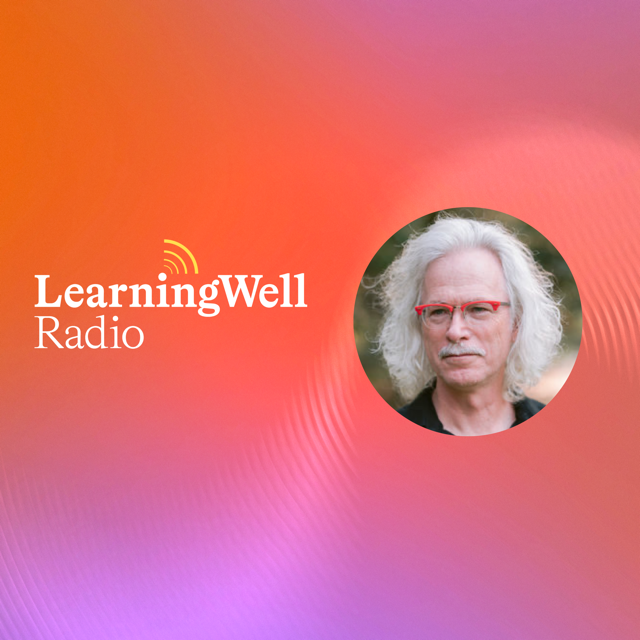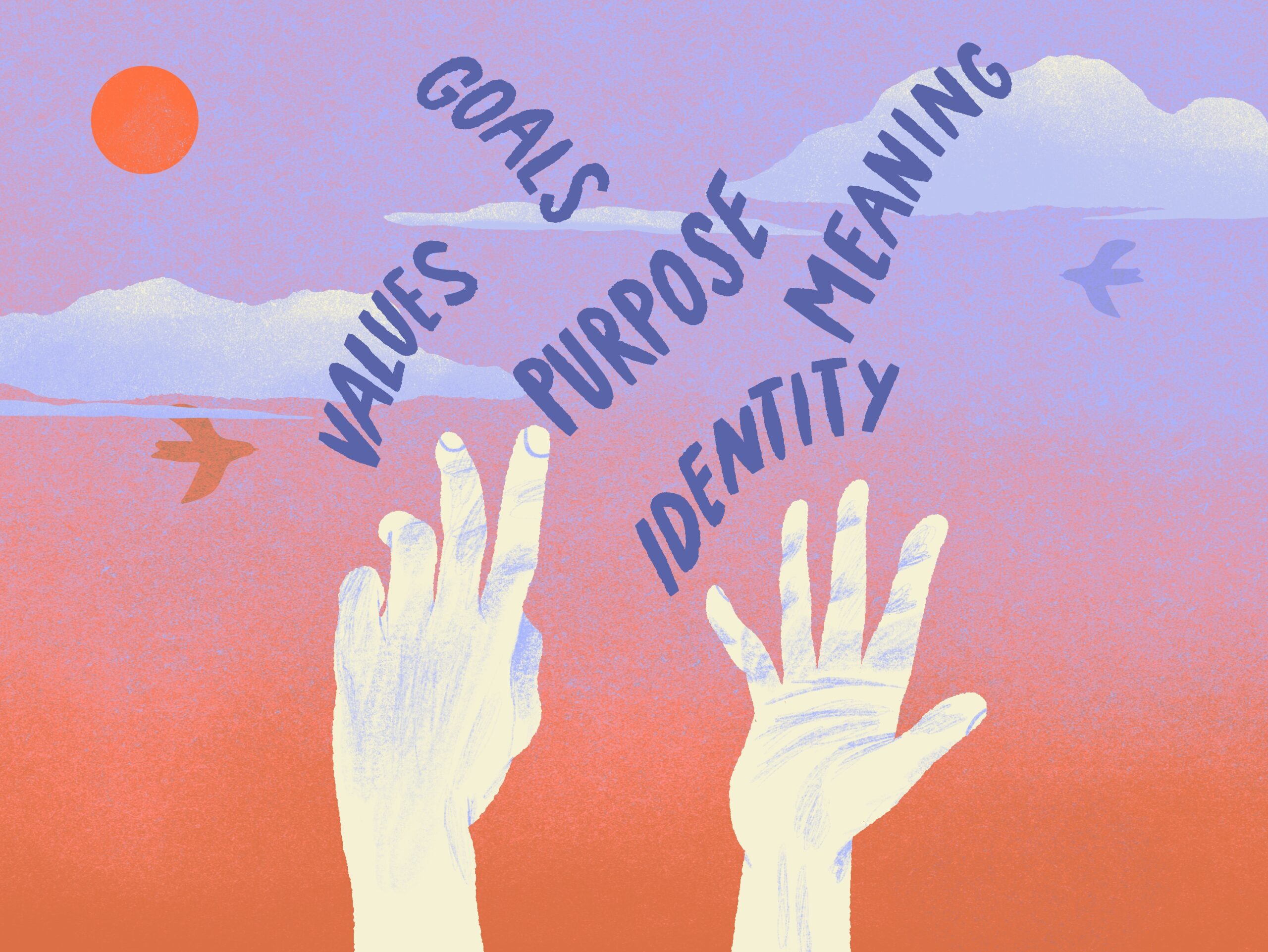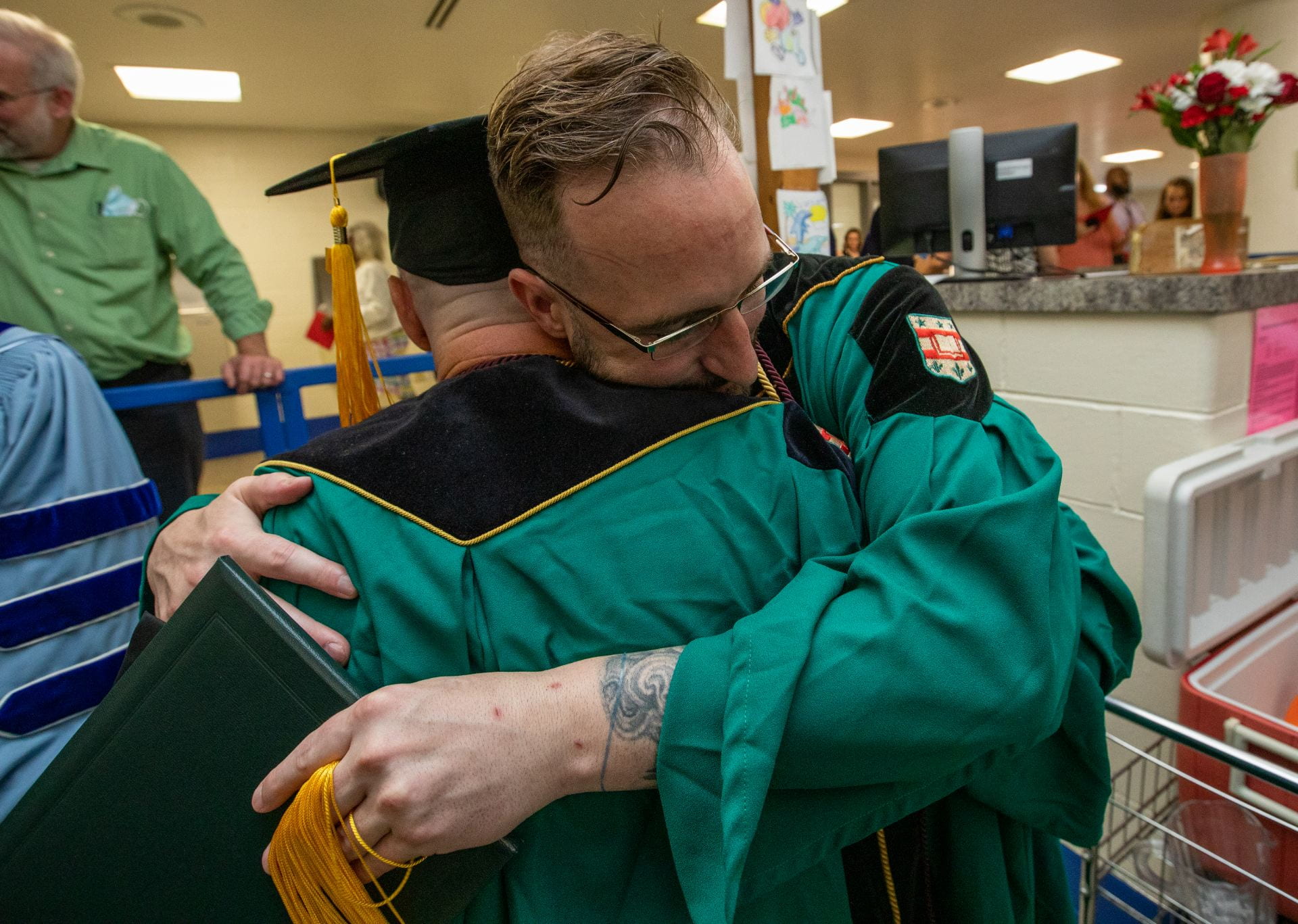
Clayton Spencer served as the President of Bates College from 2012 to 2023. A lawyer by training, Clayton was the vice president for policy at Harvard for seven years, and she has also served as chief education counsel to the U.S. Senate Committee on Labor and Human Resources.
“Purpose in Work and Life” by Clayton Spencer first appeared in Virtues and Vocations: Spring 2024.
Thinking About Work
When I arrived in Lewiston, Maine in the summer of 2012 to become the eighth president of Bates College, I was captivated by its grand landscape of manufacturing. Enormous mill buildings, most now quiet, line the city’s river and canals, their perfect rectangular forms, huge courses of impeccable brickwork, and row upon row of tall, symmetrical windows embodying the very essence of the industry they made possible. The number and sheer scale of these buildings speak to the might of Lewiston and its sister city Auburn as a textile and shoe manufacturing hub well into the twentieth century. The beauty and precision with which these structures were crafted reflect “industry” in a different sense—namely, the diligence and skill of the human beings who built the mills and ultimately worked within their walls.
It didn’t take long for me to realize that I had landed myself in a world whose deep logic involved “work.” Work as a beacon of hope for generations of French-speaking Canadians who saw in the mills of Maine the promise of a paycheck and a means to build new lives. Work as a source of vibrancy and community in a new country. Work in its most concrete form—making things.
Yet, I was charged with the seemingly cerebral task of leading an excellent undergraduate college devoted to the liberal arts and justly proud of its strong academic culture. How, then, was I to think about the work of the liberal arts in this particular setting? To be sure, a liberal arts education is not primarily about making things, but might it, in fact, involve making?
I found a compelling starting point in the words of Peter Gomes—Harvard professor, theologian, long-time minister of the university’s Memorial Church, and, as it happens, a Bates graduate. He died in 2011, after forty years spent sharing his wisdom with successive generations of Harvard undergraduates. About the aims of a Harvard education, he famously said: “We put the making of a better person ahead of the making of a brighter person, or a better mousetrap.”1 According to Gomes, we do this by helping students figure out what kind of life they wish to lead: “What is my purpose? How can my life be better? How can I help to make a better world? These are the questions worth asking, and college is one of the few places that allows you, even requires you, to do so.”2
The Logic of Purposeful Work
If motivating and equipping our students to live lives of meaning and contribution is a core purpose of the liberal arts, then work is central to the project. Whatever a person’s particular interests, choices, or constraints, most people wish to figure out a way to stay healthy and happy, to nourish human connection, and to leave the world—or at least their corner of it—better than they found it. For many people, this means, among other things, finding work that contributes to an overall sense of fulfillment, while also furnishing the practical and financial means to sustain a life.
The most important dimension of the Purposeful Work approach is the sense of agency and confidence it fosters in students.
Which is why preparing students for work and career should not be—as it has been for far too long at many excellent colleges and universities—an afterthought relegated to the waning months of senior year. (Remember the binders of banking jobs?) Nor can it be addressed by tactics alone—online hiring platforms, access to alumni networks, job shadows, internships, or industry info sessions. These practical tools are important, but only as part of a framework that locates questions about work where they belong—at the center, not on the outskirts, of the project of the liberal arts.
Purposeful work, as we came to think about it at Bates, is not a kind of work. It is not found “out there” inherent in a particular type of job or career. It can be paid or unpaid, within a family or for an outside organization, part-time or full-time, manual or intellectual, artistic or managerial. It is not “do-gooder” work, though for some individuals it might be. Rather, purposeful work is about aligning who you are with what you do and how you choose to move through the world.
Because life is a journey and we evolve over time, even as the world and ourworlds also evolve, the answers to the question of how we wish to live our lives change over the lifespan. But the essence of the exercise—learning to navigate the dynamic relationship between “self” and “world”—remains the core pursuit.
In a liberal arts setting, we give our students a great deal of choice about which courses they will take, what they will major in, and how they will populate their college experience outside the classroom. We also do our best to give them the tools to approach their choices with self-awareness, diligence, and discernment so that they can carve out a path, in college, first, and ultimately in life, that will be authentically their own.
The concept and methodology of the Purposeful Work program are built on these core principles. It is not, for instance, about exhorting students to “find their passion.” Just as purpose is not found “out there” inherent in certain types of work and not in others, it also does not typically reside within a person as a pre-existing passion waiting to be liberated. Unless, perhaps, you are Albert Einstein, or Toni Morrison, or Yo-Yo Ma.
For most ordinary mortals, purpose tends to emerge in the “doing.” This is how Richard Courtemanche, a handsewer in one of the shoe factories of Lewiston, described his purposeful work.
An average handsew[er], back in those days, in the ’60s, would probably do about twenty pairs a day. A good handsewer would do around thirty pairs a day, as he was considered to be fast.
A real fast guy, we’re talking, you know . . . thirty-five to forty pairs. I would do around sixty pairs a day, for many years. Myself and Vern, Vernon Daigle, locally, were probably the fastest handsewers. That was unheard of, what we could do. We did it because it was, it came natural, what other people would do, unnatural. So he was a good man. I learned from him, because he used to handsew quite a few years before me. I used to watch, and I’d say, I can do the same thing. And then from there I picked up the tricks that my dad used to show me, then I picked up some others, then after that, I loved it.3
Richard Courtemanche did not start with a passion for shoemaking that he unleashed on the world. Rather he waded in, he paid attention, he learned the skills, and then along the way he discovered that he was really good at stitching shoes. Only “after that,” did he come to love his work. In other words, the passion did not precede the engagement with work, it was the other way around.
Learning a set of skills or a base of knowledge is a fundamental aspect of identity formation, of becoming fully human. I can sew shoes. This is what I do. This is who I am. I am proud of it. “Myself and Vern . . . . That was unheard of, what we could do.”
For our students, most of whom have a luxury of choice that Richard Courtemanche could only dream of, purpose emerges (or not) as you try different things and get your hands dirty. But this only happens if exploration is paired with reflection. The Purposeful Work team at Bates works with students beginning in first-year orientation to ease them into the notion that the starting point for making life choices is understanding who you are and what matters to you. The staff use various tools and strategies to help students gain an awareness of their interests, strengths, and values—what brings them joy, what kind of things they know they are good at, where they are, or are not, confident in their abilities, what sorts of things they might like to try, and how much risk are they willing to take, to name a few examples.
Unquestionably, the most important dimension of the Purposeful Work approach is the sense of agency and confidence it fosters in students as they make their way through various cycles of exploration, reflection, and adaptation. These elements are specific and concrete, and students internalize the process. Based on what you’ve figured out about yourself, what kinds of work would you like to explore? Once in an internship or a job shadow, how was the experience for you, and do you wish to pursue it further? If it feels like the right field, but the wrong role, you refine your choice for your next opportunity. If the experience does not feel right at all, you move on, consciously rejecting pathways that do not align.
Learning a set of skills or a base of knowledge is a fundamental aspect of identity formation, of becoming fully human.
Not only is the Purposeful Work program built on the core values of the liberal arts, it also reinforces them. The emphasis on self-knowledge as the starting point, and the structured approaches used to develop it, puts students in the habit of making conscious choices about many aspects of their college experience—whether in the classes they choose, the activities they jump into, or the leadership responsibilities they take on. Students begin to think of their college experience itself as their “purposeful work” during the undergraduate years, even as they look toward how they will find it after graduation.4
This well-scaffolded approach is proving to be powerful for all students. It is particularly important, however, for students who may be the first in their families to go to college or have not had much exposure to a broad range of careers. From the beginning, Bates conceived of the Purposeful Work program as an important piece of its equity promise to all students. Bates is committed to providing broad access to the education it offers, and it has become much more intentional about supporting all students for academic success and full participation in the college experience. Purposeful Work adds another piece of the puzzle. A well-thought-out and well-executed approach to helping students bridge from college to work and career ensures that all students—not only those whose parents are able to connect them to networks of opportunity—have the skills and confidence to seek out career opportunities commensurate in scope and ambition with the education they have received.
Testing Our Assumptions
Bates developed its Purposeful Work program based on the intrinsic logic of a liberal arts education. Yet, the link between finding purpose in work and overall fulfillment resonates far beyond a particular set of colleges and universities and the students who attend them.
In the fall of 2018, Bates partnered with the Gallup organization to conduct a survey of nationally representative college graduates, of varying ages, career stages, and types of higher education experience, to examine how they think about purpose and work.5 Since the mid 20th-century, Gallup has explored global measures of well-being in terms of five interrelated elements: purpose well-being, social well-being, financial well-being, community well-being, and physical well-being. In examining the relationships among these, Gallup identified purpose (defined as liking what you do every day and learning or doing something interesting each day) as the most important element given its disproportionate impact on one’s overall well-being.
The Bates/Gallup study was designed to build on the existing research related to purpose well-being by specifically examining the extent to which college graduates seek purpose in their work. The findings were striking. Eighty percent of college graduates say that it is very important (37%) or extremely important (43%) to derive a sense of purpose from their work. Yet less than half succeed in finding purposeful work, and purposeful work was found to be particularly important to the younger workforce. Reflection and self-understanding are central to finding purpose—graduates who align their work with their interests, values, and strengths are three times more likely to experience high purpose than those with low levels of reflection. Finally, graduates with high purpose in work are almost ten times more likely to have high overall well-being. Only 6% of those who have low levels of purpose in their work have high levels of well-being, whereas fully 59% of those with high purpose in work have high well-being.
I offer this study not as the definitive word on a topic as deep and rich as “purpose.” Rather, I mean to describe the impulse we had at Bates, as we moved forward in developing the Purposeful Work program, to pressure-test our assumptions with a broader audience not necessarily steeped in the goals and methods of a liberal arts education.
Concluding Thoughts
We live in a world defined increasingly by complexity, uncertainty, and rapid change, where a college graduate can expect to have multiple distinct jobs before the age of 50. It is no longer sufficient or even plausible, therefore, to prepare our students for work or career based on the availability of a particular kind of first job, or on the notion of “career” as a stable and well-defined pathway through life. Instead, the ability to sustain work over a lifetime will increasingly depend on individual agency that combines the content knowledge, cognitive skills, and interpersonal abilities required for employment with a mindset of informed self-determination and adaptability.
Far from being irrelevant to preparing students for work and career, these are precisely the strengths that a liberal arts education brings to the table.
The Purposeful Work program at Bates reflects the efforts and contributions of many, including faculty, staff, students, parents, alumni, and outside experts. It began with an idea and generative discussions on campus, followed by the appointment of the “Purposeful Work Working Group” that crafted its report and recommendations in 2013-14, further program development led by a small design team reporting to the President, and the creation of the Center for Purposeful Work in the fall of 2018.
To find out more about the Bates Center for Purposeful Work, visit https://www.bates.edu/purposeful-work.
To learn about other efforts across higher education focused on the education of the whole person for growth and transformation, visit https://thecte.org.
Notes
- Gomes, Peter, Never Give Up! And Other Sermons Preached at Harvard, 2008–2010, ed. Cynthia Wight Rossano, Cambridge Memorial Church, Harvard University, 2011, p. 21.
- Ibid., p. 41.
- Richard Courtemanche, “Portraits and Voices: Shoemaking Skills of Generations,” Exhibition, Museum L-A, Lewiston, Maine (2012).
- Almost half of Bates faculty have formally integrated aspects of Purposeful Work into their classes, and all Bates students at this point engage with the program over the course of their college, many in multiple ways.
- The final report of the Bates/Gallup survey may be found in full here: bates.edu/purposeful-work.









